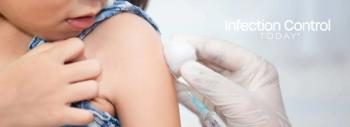
APIC24: Streamlining Health Care Worker Communicable Disease Exposure Notification and Follow-Up: A Feasibility Study

APIC24: A Texas health care system's study found that electronic notifications and self-assessments for communicable disease exposure significantly improve efficiency and adherence in managing health care worker exposures.
A poster presented at the 2024 APIC Annual Conference & Exposition, held from June 3 to 5 in San Antonio, Texas, discussed a 13-hospital health care system in central Texas that has conducted a study to evaluate the possibility and reliability of an electronic process for notifying, evaluating, and following up on health care worker (HCW) communicable disease exposure (COE). This initiative aimed to streamline the management of COE events, ensuring timely and efficient communication and response.
The poster, "Automating Communicable Disease Exposure Follow-up," will be presented by Annie Steinhauser, MSN, RN, PCCN, the associate occupational health manager for Ascension Texas; and Holly Taylor, MPH, CIC, infection prevention and quality director for Ascension Texas.
The study involved creating an electronic system designed to notify HCWs of potential COE events and facilitate their evaluation and follow-up. Once infection prevention staff confirmed an exposure event, the email addresses of potentially exposed HCWs were uploaded into a database. This database linked the HCWs to the source patient, possible exposure dates, and specific COE criteria.
A critical component of this system was the automated email notifications sent to potentially exposed HCWs. These emails directed recipients to an electronic disease-specific exposure self-assessment. HCWs who reported no exposure were informed immediately upon completing the assessment that no further action was required. Those who indicated an occupational exposure were directed to a dashboard monitored by Associate Occupational Health (AOH) for post-exposure follow-up.
To ensure compliance, HCWs received daily reminders to complete their self-assessment for five days or until the assessment was completed. This system not only facilitated timely responses but also helped ensure that all potentially exposed HCWs were adequately assessed.
From January to November 2024, the study recorded 104 exposure events involving a total of 1,634 HCWs. Out of these, 865 HCWs (52.9%) completed their exposure self-assessment. Among those who completed the assessment, 620 HCWs (70.3%) met the criteria for COE.
The response rates varied significantly between HCWs with organization-affiliated email addresses and those without. HCWs with affiliated email addresses had a higher response rate (58.4%) compared to those without (37.9%), with a statistically significant difference (P < 0.001).
Infection prevention and AOH staff reported informally that the electronic process reduced the time required to investigate COE events during the study period. This reduction in investigation time highlights the efficiency gained through automation and streamlined processes.
COEs are frequent occurrences in health care settings, demanding substantial resources for investigation and follow-up. The successful implementation of an electronic notification and evaluation process in this study suggests that automation can significantly enhance efficiency in managing COE events.
Automated email notifications to HCWs represent one effective approach to streamlining COE management. By directing HCWs to complete electronic self-assessments and ensuring prompt follow-up for those exposed, healthcare organizations can better allocate their resources and reduce the burden on infection prevention and AOH departments.
This study underscores the potential for technology to improve healthcare operations. The adoption of electronic systems for managing COE not only enhances response times but also ensures thorough and consistent evaluation and follow-up.
The feasibility study conducted by the central Texas healthcare system demonstrates the effectiveness of an electronic process for managing HCW communicable disease exposure. The approach not only improved response rates and compliance but also reduced the workload for infection prevention and AOH staff. As health care organizations continue to seek efficiencies in their operations, the integration of automated systems for COE management presents a promising solution.
Newsletter
Stay prepared and protected with Infection Control Today's newsletter, delivering essential updates, best practices, and expert insights for infection preventionists.






